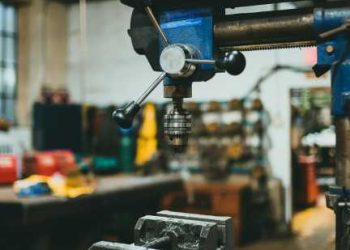How Robotics is Reshaping Manufacturing Operations
Manufacturing processes have witnessed significant advancements over the years, with robotics playing a crucial role in reshaping operations. The adoption of robotic technology has allowed manufacturers to enhance productivity, efficiency, and overall quality while reducing costs. This blog post aims to explore the various ways in which robotics is revolutionizing the manufacturing industry.
One of the primary benefits of incorporating robotics in manufacturing operations is the ability to automate repetitive tasks. Robots excel in performing monotonous and mundane tasks with precision and consistency. By automating these tasks, manufacturers can free up human workers to focus on more complex and creative work. This not only leads to increased production efficiency but also improves job satisfaction among employees.
Robotic systems equipped with advanced sensors and vision technologies are also bringing about significant improvements in quality control. Robots can consistently inspect products for defects or deviations from specified standards, ensuring that only high-quality items are released to the market. With traditional methods, human error is always a risk, but robots are capable of conducting inspections with utmost precision, greatly minimizing quality issues and potential recalls.
Moreover, robots are increasingly being used to handle hazardous materials and perform dangerous tasks in manufacturing environments, reducing the risks associated with such operations. For example, in chemical plants, robots can be employed to handle toxic substances or perform tasks in high-temperature environments, thus safeguarding human workers from potential harm. This not only enhances workplace safety but also reduces the likelihood of accidents and injuries.
Robotics also plays a pivotal role in scaling up manufacturing operations. In traditional manufacturing, scaling up production often involves significant investments in infrastructure and human resources. However, with robots, scaling up becomes much more cost-effective and efficient. Robots can be easily programmed to handle increased workloads, allowing manufacturers to expand their production capacity without making substantial capital investments.
Furthermore, robots are increasingly collaborating with humans on the factory floor, resulting in what is known as “cobotics” or collaborative robotics. This approach combines the strengths and abilities of both robots and humans, leading to enhanced productivity and efficiency. For instance, while robots excel at repetitive tasks, humans bring creativity, problem-solving skills, and adaptability to the table. By working together, humans and robots can create a more flexible and agile manufacturing environment.
The adoption of robotics is also facilitating the reshoring trend, bringing back manufacturing operations from low-cost countries. With rising labor costs overseas and the need for shorter supply chains, many manufacturers are recognizing the advantages of utilizing robots to automate production. By embracing automation, companies can compete more effectively and efficiently with overseas manufacturers while retaining control over the production process and ensuring consistent quality.
Furthermore, robotics is leading to more accurate demand forecasting and inventory management. With real-time data collection and analysis capabilities, robots enable manufacturers to make informed decisions regarding production volumes, scheduling, and material requirements. This helps reduce inefficiencies such as overproduction and stockouts, resulting in cost savings and improved customer satisfaction through on-time deliveries.
In conclusion, robotics is reshaping manufacturing operations in numerous ways. From automating repetitive tasks and improving quality control to enhancing workplace safety and enabling scalability, the benefits of incorporating robotics in manufacturing are undeniable. As the technology continues to evolve and become more accessible, it will undoubtedly play a central role in driving the future of manufacturing, enabling companies to thrive in an increasingly competitive global market.












